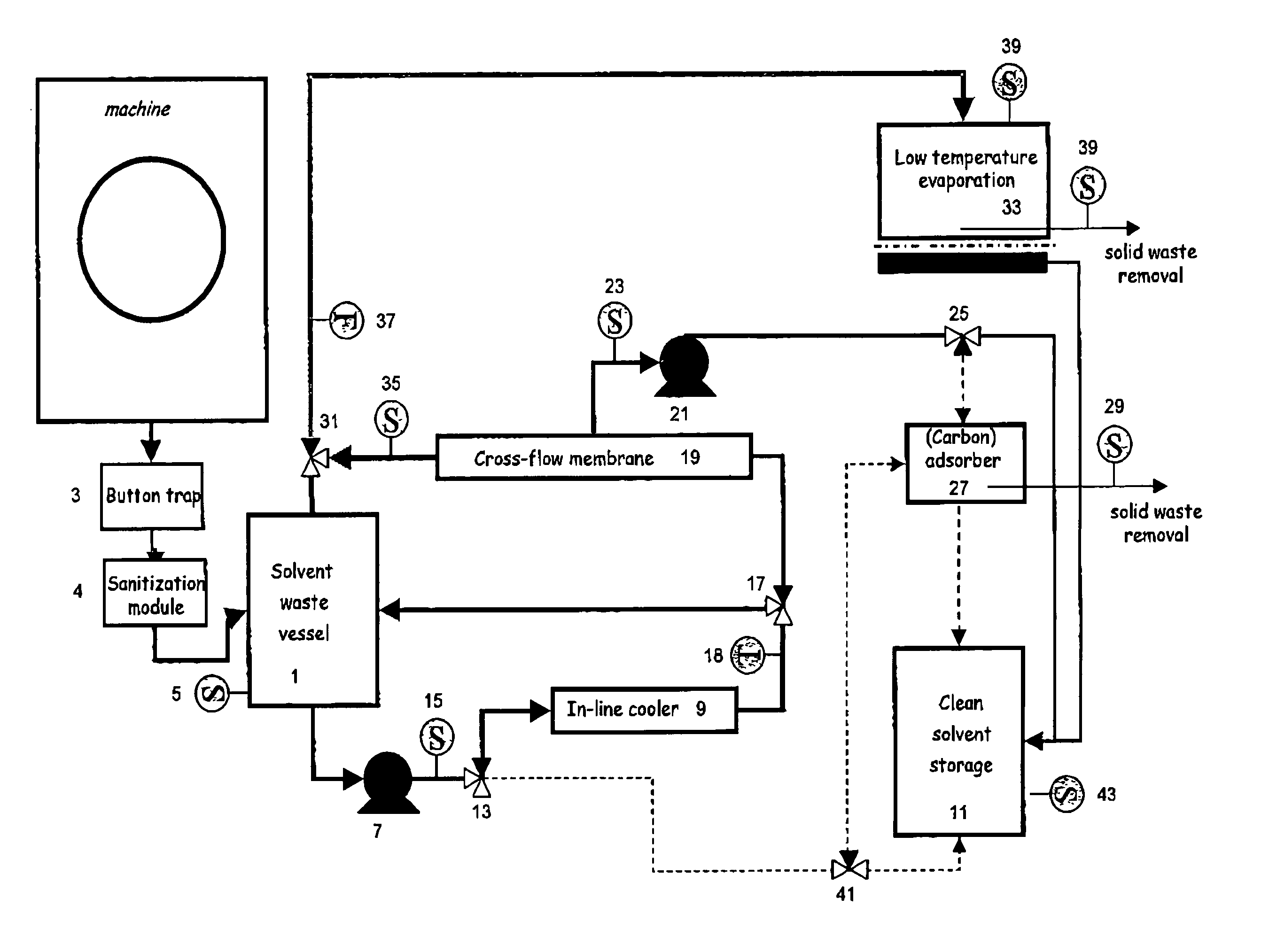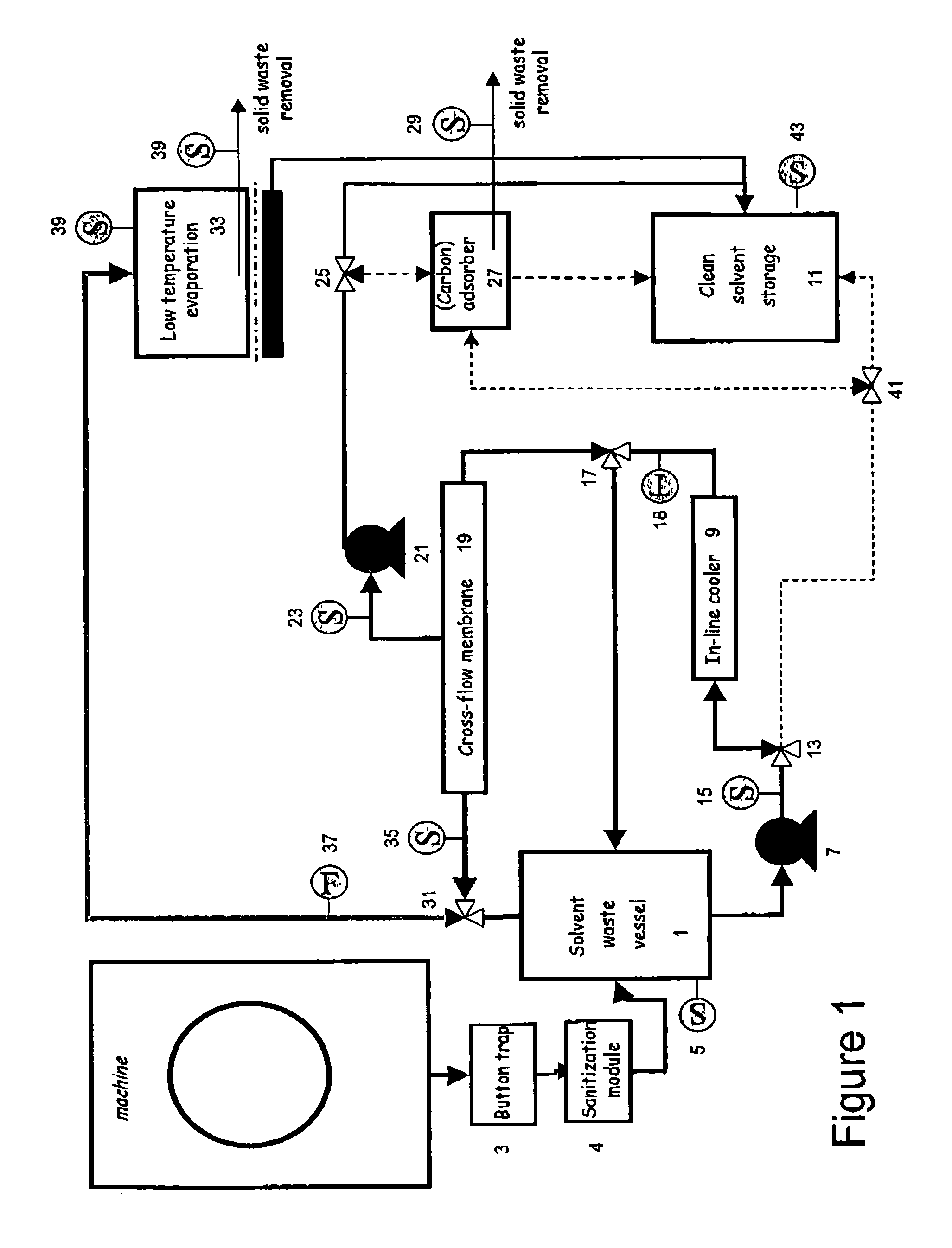Solvent cleaning process
a cleaning process and solvent technology, applied in the direction of filtration separation, separation process, liquid cleaning, etc., can solve the problems of low toxicity, unpractical and prohibitive cost, and relatively short atmospheric lifetim
- Summary
- Abstract
- Description
- Claims
- Application Information
AI Technical Summary
Benefits of technology
Problems solved by technology
Method used
Image
Examples
Embodiment Construction
Definitions
[0016] The term “dry cleaning process” used herein is intended to mean any process wherein laundry articles are contacted with a composition comprising dry cleaning solvent within a closable vessel. However, as used herein this term does not include any process comprising steps wherein the laundry articles are also immersed and rinsed in an aqueous cleaning composition comprising more than 80 wt. % water because this would damage garments that can only be dry cleaned.
[0017] The term “dry cleaning composition” as used herein is intended to mean the composition used in the dry cleaning process including the dry cleaning solvent, any surfactant, additives but excluding the laundry articles that are to be cleaned.
[0018] The term “rinse composition” as used herein is intended to mean the composition used in the dry cleaning process to rinse out the soil and excess of any surfactant, additives of a previous cleaning step The rinse composition does not include the laundry ar...
PUM
| Property | Measurement | Unit |
|---|---|---|
| pressure | aaaaa | aaaaa |
| pressure | aaaaa | aaaaa |
| pressure | aaaaa | aaaaa |
Abstract
Description
Claims
Application Information
 Login to View More
Login to View More - R&D
- Intellectual Property
- Life Sciences
- Materials
- Tech Scout
- Unparalleled Data Quality
- Higher Quality Content
- 60% Fewer Hallucinations
Browse by: Latest US Patents, China's latest patents, Technical Efficacy Thesaurus, Application Domain, Technology Topic, Popular Technical Reports.
© 2025 PatSnap. All rights reserved.Legal|Privacy policy|Modern Slavery Act Transparency Statement|Sitemap|About US| Contact US: help@patsnap.com


